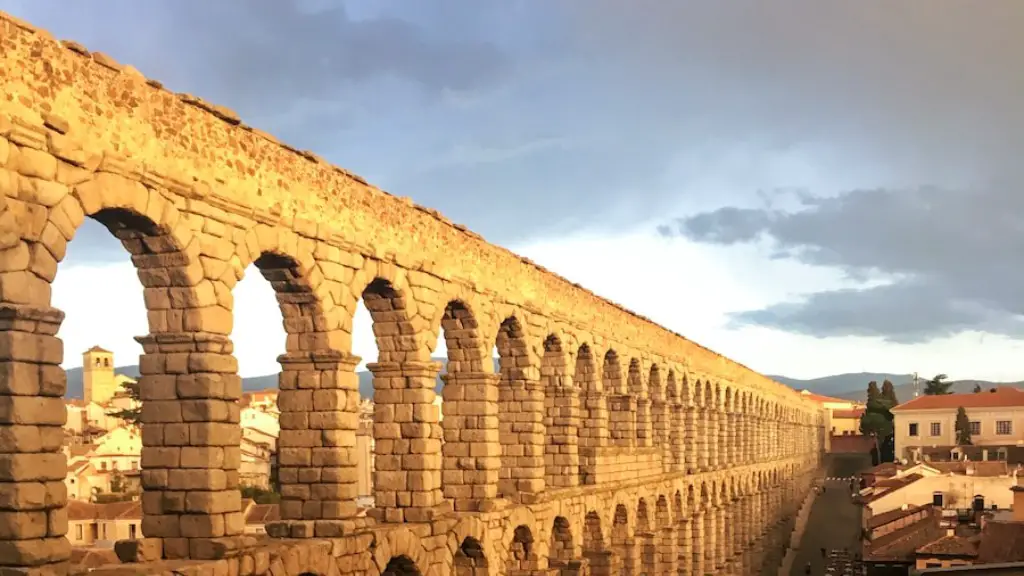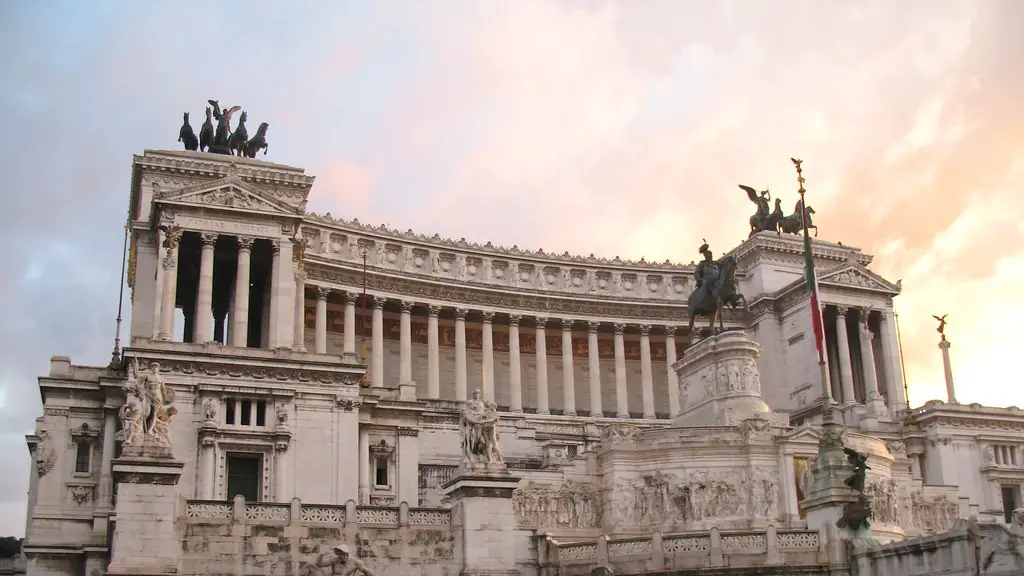Pros of Rome Without Ruins
Ancient Rome was a bustling city of over one million inhabitants. The Roman Empire had a significant impact on Western civilization, in terms of its culture, literature and art. However, the physical impact of Rome on the present-day is visible in its ruins. Although these ruins have been preserved by archeologists and politicians for posterity, some experts believe that Rome would be better off without them.
Rome without ruins could save time and money from maintaining and preserving them. Archeologists have deciphered and cataloged much of the ancient Roman city, and restoring and conserving these ruins may cost more money than some parts of the city budget can afford. Moreover, by removing such ruins, it could become easier to build residential buildings, offices, and other infrastructures for the population.
In addition to providing urban development and economic opportunities, some believe that Rome without ruins could present a much needed cultural shift and progress away from its past. Experts point out that Rome’s ancient ruins may serve as a constant reminder of its imperial legacy, and that the city might need to move beyond it to create a new future.
Furthermore, some experts argue that Rome without ruins could bring with it a sense of optimism and a belief in a better future. Such optimism is important and could help spur greater economic growth and encourage more cultural collaboration and unification. This could bring new and exciting experiences to visitors, attract new talent to the city, and help Rome become a more prosperous and vibrant city.
Moreover, advocates of a Rome without ruins believe that it could provide the city with an opportunity to start fresh. By eliminating the past, the city could focus more on building an inclusive and progressive future. Places of importance to the city’s history could be honored elsewhere, and the absence of ruins would also create more room for the city to develop and expand in new directions.
Cons of Rome Without Ruins
On the other hand, some experts have voiced strong objections to removing the ruins of Rome. One major argument against this idea is that the ruins are an important part of the city’s cultural heritage and serve as a reminder of its rich history. Removing these ruins would be tantamount to erasing centuries of history and denying future generations the opportunity to learn from the past.
Moreover, the destruction of Rome’s ancient landmarks could be detrimental to the city’s tourism industry. Tourists come to Rome in droves to experience the city’s majestic ruins and to capture the essence of its ancient grandeur. If these ruins were to be destroyed, it could mean an immense loss of revenue for the city, as tourism is a major contributor to the city’s economy.
Furthermore, the destruction of Rome’s ancient ruins could adversely affect the city’s identity and landscape. Critics argue that the absence of ruins could make the city look much less unique and special. The ruins are part of what sets Rome apart from other cities and give the city its distinct character. Thus, eliminating them could strip the city of much of its charm.
Finally, some experts warn against the dangers of removing the ruins before full records are kept. The city of Rome is home to many artifacts, historical documents, and monuments, and Archeologists have worked hard to uncover its many layers. Erasing the ruins without recording the information therein would mean a huge loss of information and a regression of the city’s identity.
Conclusion
Overall, the idea of Rome without ruins has both pros and cons. On the one hand, it could provide the city with more economic and urban development opportunities. On the other hand, the destruction of the ruins could cause the city to lose its cultural heritage and identity. In the end, the question of whether or not to remove the ruins of Rome is an important one that must be carefully considered before any major decisions are made.
Social Impact of Rome Without Ruins
The social implications of removing the ruins of Rome are difficult to predict. On one hand, it could spread a much-needed sense of optimism and progress, while on the other it could create a sense of disconnect between the city and its past. Some experts believe that the removal of the ruins could result in a better future for the entire population.
The absence of the ruins could also bring about a more diverse population, by encouraging immigrants to come to the city and by creating an environment for a flourishing economy. In addition, it could create more room for cultural collaboration and strengthen ties between different communities. This could be beneficial for the city, as it benefits from having different perspectives and experiences in its population.
However, the removal of ruins could also lead to a more homogenous mindset. The lack of Greek and Roman influences could lead to a more commercialized, consumer-focused culture and threaten the growth of other cultures, such as art and intellectualism. This could create a very different cityscape in the end. Therefore, it is important to consider the consequences of each decision before moving forward.
Mental Health Implications of Rome Without Ruins
The removal of Rome’s ancient ruins could also have an effect on mental health. In the short term, it could cause many to feel loss and sadness, as the ruins are an important part of the city’s physical and spiritual identity. People could feel disconnected from its past and uncertain about its future. This could lead to an increase in depression, anxiety, and other mental health problems.
In addition, the destruction of the ruins could have a long-term effect on the city’s collective mental health. Without its monuments, Rome might become less focused on its grandeur and more concerned about practical issues of modern life. This could lead to a deterioration in its culture and a decrease in its focus on intellectualism, creativity and the arts. Such changes could lead to a future with less well-being for its inhabitants.
It is also important to take into consideration the potential environmental impacts of removing the ruins. While it could provide more space for construction and development, it could also mean an increase in air pollution, noise pollution, and other environmental hazards. These could also have a long-term effect on the city’s mental health and wellbeing.
Implications on the Physical Landscape
The utter destruction of the ruins of Rome could also have drastic implications on its physical landscape. Without the ruins, the city would lose its distinctive character and be subject to more generic and commercial forms of architecture. This could lead to a much less beautiful and unique cityscape and could even threaten its status as a world-renowned tourist destination.
Additionally, the city could end up with a less practical and more congested urban landscape. Without the ruins, there may be less space to build roads and utilize public parks. This could result in a more crowded city and may hinder the development of an efficient transport system. Such an overcrowded landscape could also have an effect on mental health, as it could lead to an increase in stress and anxiety.
Finally, without the ruins, the city could also experience changes in its natural landscape. Ancient Roman monuments and buildings have served as a buffer zone between the city and its outer areas, preventing the spread of pollution, dust and other contaminants. The destruction of these ruins could lead to an increase in such substances, leading to adverse effects on the environment and on the health of the population.
Implications on Political and Social Structures
The destruction of Rome’s ancient ruins could also have an effect on its government and social structures. It could lead to an increase in power for those in power and a decrease in the importance of culture and heritage. This, in turn, could reduce the political and cultural importance of monuments and ruins that represent an important part of the city’s history.
Furthermore, the destruction of the monuments could also weaken the voice of the population. Without them, Rome might become even more disconnected from its past, leading to a diminishment in the value of civic responsibility among its inhabitants. This could cause people to become less politically engaged and politically informed.
Finally, it could also lead to a more authoritarian style of government. The removal of the monuments could mean a weakening of public opinion, as the monuments and ruins represent the city’s collective identity. This could potentially lead to a rise in oppressive policies and to a decrease in respect for the rule of law.





